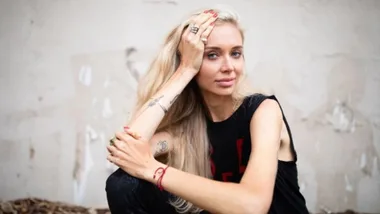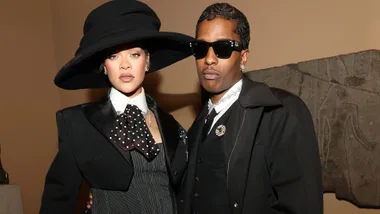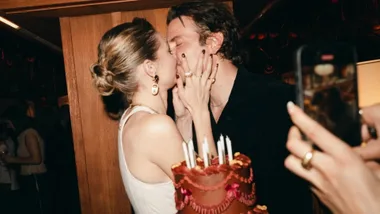Perhaps one day, Aiko* and Kenji* Nomura will laugh about the “Birthday Cake Incident” of late 2012. Aiko, a care worker from the city of Koriyama in north-east Japan’s Fukushima prefecture, was celebrating her 35th birthday. Her husband, Kenji, decided to surprise her with the biggest cake he could find. It was filled with whipped cream and decorated with pink roses.
“I couldn’t help myself,” recalls Aiko. “Kenji had a huge smile on his face, but the first words out of my mouth when I saw the cake were, ‘Is the cream safe?’”
Since March 2011, when a meltdown occurred at the Fukushima Daiichi Nuclear Power Station 60km from their home, the Nomuras have avoided buying dairy and other food produced in their region. Kenji, 42, confessed to Aiko that he’d forgotten to check the cream’s origins. “I’m sure it’s fine. Please eat some – just this once,” he begged her. Aiko refused. She wouldn’t let their children have any, either. Kenji ate the cake alone. The couple didn’t speak for two days.
It’s been more than two years since the earthquake and tsunami in northeastern Japan that killed almost 20,000 people and caused the world’s worst nuclear disaster in 25 years. Koriyama, an inland commercial hub with 337,000 people and views of nearby mountains, was spared the tsunami’s monstrous waves, but it couldn’t escape the clouds of radioactive particles that spread widely following multiple explosions at the Daiichi plant. The total amount of radiation released into the air was between 10–40 per cent (depending on who funded the estimate) of the quantity released during Ukraine’s Chernobyl disaster in 1986 – and over an area of Japan with a population density 10 times greater. In the aftermath, radiation levels in Koriyama spiked at 30–40 times higher than legal limits, contaminating the city with caesium and other long-life radionuclides (radioactive atoms) for decades to come.
The Nomuras, who have two small daughters – Sakura*, almost four, and Koto*, nearly two – have managed to hold together their marriage and family, but only just. In the past two years, they’ve had to cope with the arrival of a new baby (Aiko was newly pregnant with Koto when the disaster struck), periods of enforced separation, and life in an environment that feels infinitely less wholesome and secure than it did before.
The stress on family life for all two million residents across Fukushima has been immense. Marital discord has become so widespread that the phenomenon of couples breaking up has a name: genpatsu rikon, or “atomic divorce”. There are no statistics yet, but Noriko Kubota, a professor of clinical psychology at Fukushima’s Iwaki Meisei University, claims there are many cases. “People are living with constant low-level anxiety. They don’t have the emotional strength to mend their relationships when cracks appear.”
“People are living with constant low-level anxiety.”
Noriko Kubota, Fukushima’s Iwaki Meisei University
Moreover, now that what Kubota calls the “disaster honeymoon period” of people uniting to help one another in the immediate aftermath is over, long-term psychological trauma is setting in. “We are starting to see more cases of suicide, depression, alcoholism, gambling and domestic violence,” she asserts. The young are not immune, either. In December 2012, Fukushima’s children topped Japan’s obesity rankings for the first time, apparently due to comfort eating and inordinate amounts of time spent indoors avoiding contamination. “From the point of view of mental health, this is a very critical time,” adds Kubota.
Most unmentionable of all, people from Fukushima are experiencing discrimination within Japanese society. Social stigma attached to victims of radiation goes back to the aftermath of the World War II atomic bombings of Hiroshima and Nagasaki, when men couldn’t find work and women were unable to marry due to fears they were “tainted”. While the ignorance that remains is far from widespread, it is highly pernicious. Tales exist of people from Fukushima being barred from donating blood, or being asked to provide a medical certificate listing their caesium levels on job applications.
A Tokyo maternity hospital advised one mother not to let her Fukushimabased parents visit their new grandchild, “just to be safe”. Prejudice against women is the most pervasive: many negative comments in the media insinuate that Fukushima women are “damaged goods”. Even some people who are supposedly on the side of radiation victims are prepared to throw them on the reproductive scrap heap. In July 2012, prominent anti-nuclear activist Hobun Ikeya, head of the Ecosystem Conservation Society of Japan, said at a public meeting, “People from Fukushima should not marry because the deformity rate of their babies will skyrocket.”
Aiko and Kenji are eating lunch when I meet them at a restaurant outside Koriyama’s city centre. It’s a freezing winter’s day, but inside there’s a coal-burning stove and the comforting smell of roasted sesame. The couple is sitting at a low table on a tatami mat floor calmly eating while their girls, Sakura and Koto, clamber over them.
The restaurant, says Aiko, is their new sanctuary. Called Ginga no Hotori (“Edge of the Galaxy”), the former health-food restaurant now serves something even better for the body: guaranteed non-radioactive meals. “It’s relaxing to eat here. I don’t have to cook or worry,” says Aiko. “And the food is very tasty.”
“Samples from everything we use in our cooking are checked [for radiation]… it gives people some peace.”
Katsuko Arima, Restaurant owner
Enormous effort goes into preparing the tofu burgers, black sesame buns, organic miso soup and other menu items. Hidden behind a rustic partition is a high-tech metal panel with dials and switches that operate a gamma spectroscopy machine. It looks similar to an industrial-sized food processor, except it measures levels of the deadly radioisotope caesium-137. The restaurant’s owner, Katsuko Arima, an energetic 50-something in a blue bandana, explains that each food item must be peeled and chopped before being placed in the machine for 30 minutes. “Samples from everything we use in our cooking are checked and rechecked,” she insists. “It’s a lot of work, but I wanted to do this to give people some certainty, some peace, when they eat here.”
While the restaurant is one of a kind, numerous citizens groups with similar machines have set up makeshift offices in shopping centres so people can test everything from their groceries to garden soil. “Nobody trusts the government anymore,” states Arima. She cites cases of official incompetence when supplies of beef, rice and vegetables declared safe by the authorities were found to be contaminated. “You can only trust yourself.”
Aiko and Kenji agree. After lunch, they tell me that conflicting information about safety issues has caused countless arguments. “We’ve ended up screaming at each other,” reveals Aiko. Now they’ve made a pact to take their health, and that of their daughters, into their own hands as much as possible. “We would rather move away from here, but we can’t afford it,” muses Kenji, a softly spoken man with a fringe that sits neatly on the rim of his spectacles. “I would have to give up my job. It is hard to find new work in the current economy.” Koriyama, like many affected towns, is outside the mandatory evacuation zone. The government decreed that the radiation risk to health was “minimal” beyond a 30km radius around the plant and has provided no support to help people leave independently. Kenji reasons it is afraid of triggering an exodus that would impoverish the disaster-hit region further.
“We must do everything we can to minimise our daughters’ radiation exposure”
Kenji Nomura
In assessing the dangers, the Nomuras believe there are too many unknowns to feel secure. “If there’s one thing we’ve learnt, it’s that the government and scientists don’t have all the answers,” notes Kenji. “Even if the risks are low, we must do everything we can to minimise our daughters’ radiation exposure.” Aiko nods. “As parents who have to live here, it’s the only option,” she adds. In practice, this means trying to seal all the leaky edges of their world without turning it into an over-sanitised bubble. It’s a difficult balance, and Aiko admits she often struggles. “Sakura always wants to pick up flowers and leaves when we’re outside, and I hear myself saying things like, ‘Don’t touch, get away from that.’ It’s sad.” The family wears face masks outside, and drives instead of walking. They dry their laundry and air their futons inside. They avoid tap water, fish, seaweed, dairy and locally grown rice and vegetables. Like most people, they own a portable dosimeter for measuring external radiation (a popular brand is Mr Gamma).
Although most of Koriyama has been decontaminated through washing and removing topsoil, high radiation levels can return with wind and rain. The periodic discovery of radioactive “hotspots” everywhere from playgrounds to parking lots is a constant concern.
Arima brings a tray of radiation-free coffee. It’s also coffee-free coffee. It’s her own recipe of steeped bamboo charcoal grains, charred soybeans, azuki beans and crushed brown rice. “It has excellent decontaminating properties,” she declares. Everyone drinks it down and, like everything else in Arima’s restaurant, it’s delicious.
The next morning I visit Aiko and her two girls at their apartment. Kenji is at work. Their home is in the classic utilitarian Japanese style: low-rise concrete exterior, with tatami mat floors and cream walls inside. We sit at the living-room table, with laundry dangling over our heads. Although Sakura and Koto have plenty of toys lying around, the girls never stray from their mother during the three hours we talk.
Aiko was driving when the magnitude 9 earthquake struck at 2.46pm on Friday March 11, 2011. As a care worker for the elderly, she was on her way to visit a disabled widower. “The road started shaking and I stopped the car. The quake was so violent, the traffic lights were waving like flags.” Kenji was at home that day taking care of Sakura, then 15 months old, who had measles. “I managed to call him on my mobile. They were not hurt,” recounts Aiko.
At first, the Nomuras were preoccupied with the news emerging about the annihilation of towns along the Tōhoku coastline. The tsunami reached up to 40 metres above normal sea level, and it was obvious that hundreds, possibly thousands, of lives were lost.
“I couldn’t stop crying. I’d never seen anything like it,” remembers Aiko. She heard a newsreader mentioning the Fukushima Daiichi power plant, but she wasn’t alarmed. “All I caught was that there wasn’t a serious problem.” Indeed, although it’s now emerged that the government knew a cataclysmic failure of the cooling systems was likely to occur, it failed to raise the alarm.
On the evening of the disaster, a spokesperson told reporters: “There is no radiation leak, nor will there be a leak.” When the hydrogen explosions began soon after, authorities continued to downplay the severity and misinform the public.
The Nomuras had much at stake when the reactors blew up. Aiko had just realised she was five weeks pregnant with Koto. “We knew radiation was especially dangerous for unborn babies, so we were terrified,” admits Aiko.
“We knew radiation was especially dangerous for unborn babies, so we were terrified”
Aiko Nomura
Unconvinced by continued government reassurances, Aiko decided to flee south with Sakura. It was too late to prevent their exposure to iodine-131, a radioisotope that attaches to the thyroid gland. It is believed to have caused hundreds of cases of thyroid cancer among people who were children at the time of the Chernobyl disaster. As of June, Japan had tested 174,000 children in Fukushima and found abnormal thyroid cysts and nodules in more than 40 per cent. Twelve cases of cancer were confirmed, another 16 were suspected. Sakura is waiting to be tested.
Aiko went to stay with friends in Osaka. Kenji remained at home. As stories of contamination dominated the news, Aiko pleaded with her husband to leave Koriyama. Here, her story diverges from the version Kenji gave at the restaurant the previous day. “I told him it didn’t matter about his job. I didn’t care about money.” Kenji was furious. He said he’d had his post office job since he was 20 years old; leaving his colleagues would be like desertion. “Some people in Koriyama even put pressure on me to come back. They said if we’re all going to die, we should die together – that’s the mentality,” points out Aiko.
In November 2011, near the end of her pregnancy, Aiko left Osaka for Tokyo. There were more specialists in the effects of radiation on unborn babies and it was closer for Kenji to visit. But their marriage was on the point of collapse. “We wanted to make it work, but it seemed impossible,” says Aiko.
Being alone in the capital, a heavily pregnant nuclear refugee with a toddler in tow, was almost “breaking point” for her, explains Aiko. Koto was born with a “strange mark” on her bottom, but otherwise healthy. The mark was so unusual, 10 specialists examined it; none of them could determine what it was. “All the doctors were in the room at once. I felt like we were guinea pigs.” They still don’t have any answers.
When Koto was a few months old, Aiko moved back to Koriyama. “It was too damaging for the children to be separated from their father, and to be living like gypsies,” she justifies. Aiko insists the atmosphere in Koriyama is different now than when she left in March 2011. Fukushima, once one of Japan’s richest agricultural areas, is trying to recover economically. In the finely calibrated world of Japanese social interaction, it’s taboo to admit to not buying local produce or even mention radiation fears. The nearby city of Iwaki even has a superhero called Jangara, who appears at events for children. His archenemies are “fools and sloppy people” who complain about radioactivity and spread rumours that the area isn’t safe to visit.
Aiko understands the desire to regenerate the area and dispel negativity, but not at the expense of downplaying the disaster or the dangers it still poses. She’s angry with the government and power company Tepco. She’s also angry with herself and everyone else in Fukushima who colluded with nuclear power. “We are all responsible. We voted for the plant to be built, we wanted the material benefits it would bring to the area.” And she worries, terribly, about whether her daughters will face their own problems with fuhyo higai (harmful rumours) in the future.
Still, the Nomuras’ greatest concern is the health of their daughters. Serious health consequences of low-dose radiation, which enters the body’s tissues and damages DNA, often don’t show up for years. With the second anniversary behind them, the couple is happy they’re rebuilding their family life and that their home region is slowly regenerating.
But the passage of time also brings an unwelcome twist. “It’s impossible to recover fully from a nuclear accident,” says Aiko. “Each anniversary, Kenji and I will be thinking, ‘Is this the year one of our daughters will get sick?’”
 Eric Rechsteiner
Eric Rechsteiner









